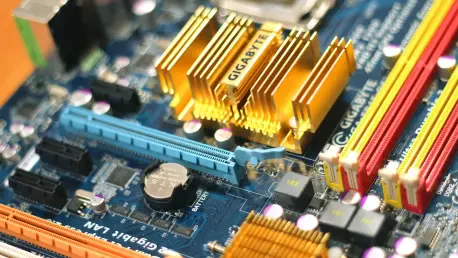In today’s rapidly evolving technological environment, the strides being made in artificial intelligence (AI) are nothing short of revolutionary. Huawei stands at the forefront, with its AI chip technology signaling a significant shift from traditional semiconductor methodologies. As tensions persist in international trade, particularly between the US and China, Huawei’s approach to AI is more important than ever, prompting a closer examination of its cutting-edge advancements in chip technology. With an investment of $25 billion annually in research and development, Huawei is poised to challenge existing paradigms by leveraging novel methods and innovative techniques.
New Frontiers in Huawei AI Chip Technology
Ascend AI Processor Line
The Ascend AI processors represent Huawei’s crown jewel, marking an ambitious entry into a market largely dominated by industry stalwarts like Nvidia. Engineered to handle diverse AI workloads, these processors showcase impressive computing power and architectural innovation. Huawei’s strategic focus on these processors is underscored by their role in executing complex AI tasks across different sectors. Though currently outpaced by some competitors, Ascend processors are paving the way for Huawei’s development of chips that drive future technological growth worldwide.
Breakthrough Techniques
Huawei employs an array of unconventional techniques to overcome limitations imposed by traditional semiconductor technologies. Cluster computing and mathematical shortcuts have been instrumental in augmenting processing capabilities. By avoiding dependency on Moore’s Law, Huawei strategically exercises flexibility in an environment constrained by export restrictions. Its use of simplified floating points exemplifies the emphasis placed on enhancing performance without relying heavily on finite chip resources. These innovations not only enable Huawei to optimize power and performance but also illustrate its dedication to pioneering in an unpredictable geopolitical landscape.
Progress and Market Considerations
The journey of Huawei’s AI chip innovation hinges on its adaptability in a competitive market. Recent shifts in industry dynamics have pushed Huawei towards creating chips less reliant on advanced manufacturing capabilities. This transition underscores a burgeoning trend where creativity and strategic ingenuity are central to achieving technological supremacy. As Huawei balances between innovation and compliance, companies worldwide are encouraged to reassess their AI strategies carefully, aligning them with evolving geopolitical and market conditions.
Practical Implementations Across Industries
Huawei’s AI chips have found diverse applications across various sectors, exemplifying their versatility and practicality. Industries such as telecommunications, transportation, healthcare, and manufacturing increasingly rely on these chips for enhancing operations and driving efficiency. Unique use cases illustrate Huawei’s ability to cater to specific industry requirements. Such adaptability resonates with enterprises seeking technology integrated into their existing workflows while fostering unprecedented levels of productivity and innovation in real-world environments.
Challenges and Regulatory Concerns
Despite considerable headway, Huawei’s AI chips face substantial challenges that warrant attention. Technical complexities, combined with stringent regulatory frameworks, pose hurdles that Huawei navigates cautiously. The implications of export controls, primarily instituted by the US, necessitate a reevaluation of existing supply chains and market strategies. Efforts to mitigate these barriers revolve around robust compliance mechanisms and proactive risk management, ensuring strategies align with shifting geopolitical landscapes.
Forward-Looking Impact of Huawei AI Chips
The future impact of Huawei’s AI chips is poised to reshape the technological landscape profoundly. Ongoing research anticipates breakthroughs pegged on architectural novelties and enhanced performance metrics. Huawei’s pursuit of chip excellence may catalyze sectors globally, setting new benchmarks in AI capability and innovation. The potential ripples of these advancements could extend to social and industrial dimensions, reshaping how enterprise and community systems operate.
Closing Remarks
Upon evaluating Huawei’s AI chip innovations, the overarching narrative reveals a company fueled by resilience and imaginative problem-solving. While international constraints persist, Huawei’s commitment to evolving technology remains unwavering. Ultimately, the anticipated future encompasses readiness to embrace strides in semiconductors, yet emphasizing collaboration across borders that will dictate technological trajectory. The narration of next steps hinges on adaptability, paving the way for transformative developments in AI chip technology.









